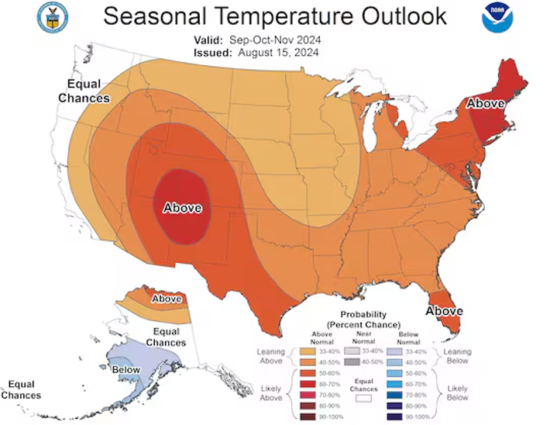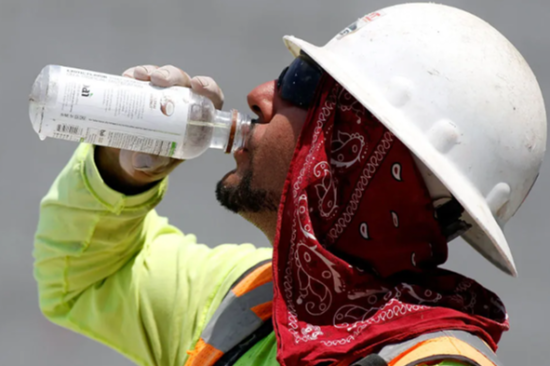Although our ancestry takes us back to Africa where our species evolved in a hot climate, humans today live almost everywhere including places of extreme heat and cold. We are, however, in our evolved capacity restricted by our physiology. Too hot and we die. Too cold, the same outcome.
Both cold and warm extremes place an added burden and additional risk for our species. The scientific literature tracking morbidity and mortality numbers is telling us we are increasingly in danger from both.
A recent article in The Lancet Public Health examines temperature related to mortality in 30 European countries and 854 cities. Age-specific data was looked at from five groups divided by ranges from 20 to 44, 45 to 64, 65 to 74, 75 to 84, and 85 and above. Extremes in temperature weather cold or hot impact the elderly more than young adults. In southern European cities, extreme cold is cited as causing 8.3 times more deaths in the elderly than extreme heat largely attributed to respiratory tract infections and complications.
In the future, however, when atmospheric temperatures rise by as much as 3 Celsius (5.4 Fahrenheit), the rate of deaths in the elderly will skew to be much greater compared to younger adult populations because of the heat. That doesn’t mean that the cold-related risks will not be present. The ratios may change with predictions showing a reduction to 2.5 from 8.3 by 2100.
The article recommends that governments track future burdens of heat and cold when determining future climate adaptation policies.
Parts of the U.S. Roast As The Atmosphere Warms
If you don’t live in the U.S. south and southwest you probably are having a warmer than normal summer. But what is happening in Dallas, Houston, Austin, Amarillo, San Antonio, Corpus Christi, Waco, Albuquerque, Phoenix, Las Vegas, Tucson, and many other cities across the U.S. South presently represents a disturbing future trend as anthropogenic climate change progresses.
In the last week and for the next two, most of Texas is seeing or will see daytime highs above 43 Celsius (110 Fahrenheit) with heat indices reaching 45 Celsius (113 Fahrenheit) or higher. The heat index combines temperature and humidity.
The same highs are being recorded in Phoenix. Phoenix has seen 43 Celsius (110 Fahrenheit) or higher temperatures for 50 days in 2024. Temperatures at mid-day in Albuquerque are hitting 37.8 Celsius (100 Fahrenheit). Albuquerque sits at an average elevation of over 1,730 metres (approximately 5,700 feet) above sea level. It is the highest elevation for any large U.S. city.
Daytime temperatures are one thing, but the nighttime highs from Kansas to the Gulf of Mexico and from Louisiana to Arizona are also at record levels with temperatures between 23 and 32 Celsius (75 and 90 Fahrenheit).
For the elderly, the ill, and the very young, these high-temperature lows represent the greatest danger. Without air conditioning, the body gets no relief from the extreme day and night heat.
The cause points to a record of 14 months of global temperature highs caused by the current El Niño boosted by anthropogenic climate change. Even as the El Niño wanes the map seen below produced by NOAA’s Climate Prediction Center shows that other than parts of Southwestern Alaska, and the Pacific Northwest and California coast, seasonal temperatures through to November are expected to be leaning to above average.

Calls for Heat Safety Protections in U.S. Urban Centres
Death from excessive heat came to a Baltimore municipal employee on August 2, 2024. A sanitation worker passed out while at work and died in hospital. The worker’s death was described by those who work in occupational safety and health as preventable. This death from heat can be expected to happen more frequently as rising temperatures from climate change combine with the heat island effect in large urban centres.
Exposure to heat for outside workers in places where temperatures exceed daytime highs of 30 Celsius (86 Fahrenheit) with heat indices of 37 (98.6 Fahrenheit) or higher are becoming summer norms. The daytime temperature in Baltimore that day reached 36.1 Celsius (97 Fahrenheit).
A May 2022 article in Time Magazine described a JAMA study that predicted a staggering increase in unsafe outdoor workdays by 2050 representing cumulative work losses of earnings at USD 55.4 billion annually. The article noted that protection standards in the U.S. remained piecemeal at best and outdated or inadequate at worst if they existed at all.
WHO Lists Facts About Heat and Human Vulnerability
The World Health Organization (WHO) tracks heat-related deaths across the globe. It notes that the human body has existing heat stores and when exposed to high external temperatures, high humidity, low wind and high thermal radiation combined with clothing makes it difficult to regulate internal temperature resulting in heat exhaustion and heat stroke. The WHO notes that heat extremes worsen health risks from diabetes, heart, kidney and lung disease. It exacerbates conditions like asthma.
Exposure to extreme heat from climate change the WHO notes has been growing exponentially all over the planet. Heat-related mortality for those 65 years of age or older has increased by approximately 85% between 2000 and 2021. Here are some other statistics:
- Between 2000–2019 approximately 489,000 heat-related deaths occurred annually with 45% in Asia and 36% in Europe.
- The summer of 2022 saw 61,672 heat-related excess deaths in Europe.
- In 2003, Europe recorded 70,000 excess deaths from excess heat occurring from June to August.
- In 2010, Russia recorded 56.000 excess deaths caused by a heatwave lasting 44–days.
The health impacts of excessive heat are known, predictable and preventable, notes the WHO which has produced guidelines for public health institutions to identify and manage extreme heat risks. What occurred in Baltimore need not have happened if the city had instituted effective heat risk policies and procedures.









